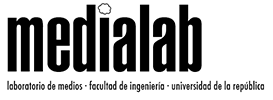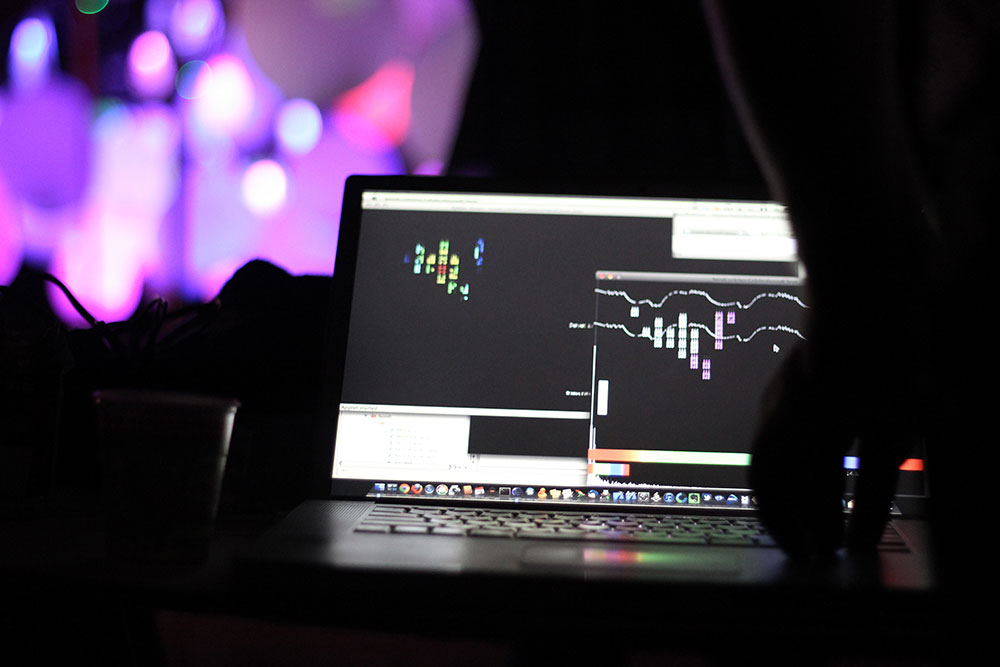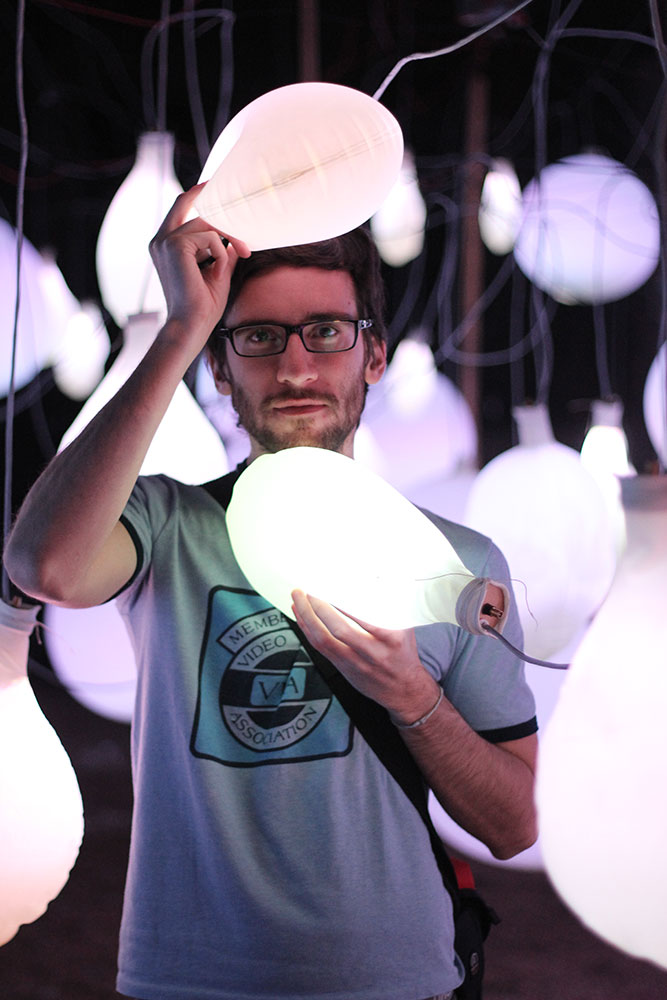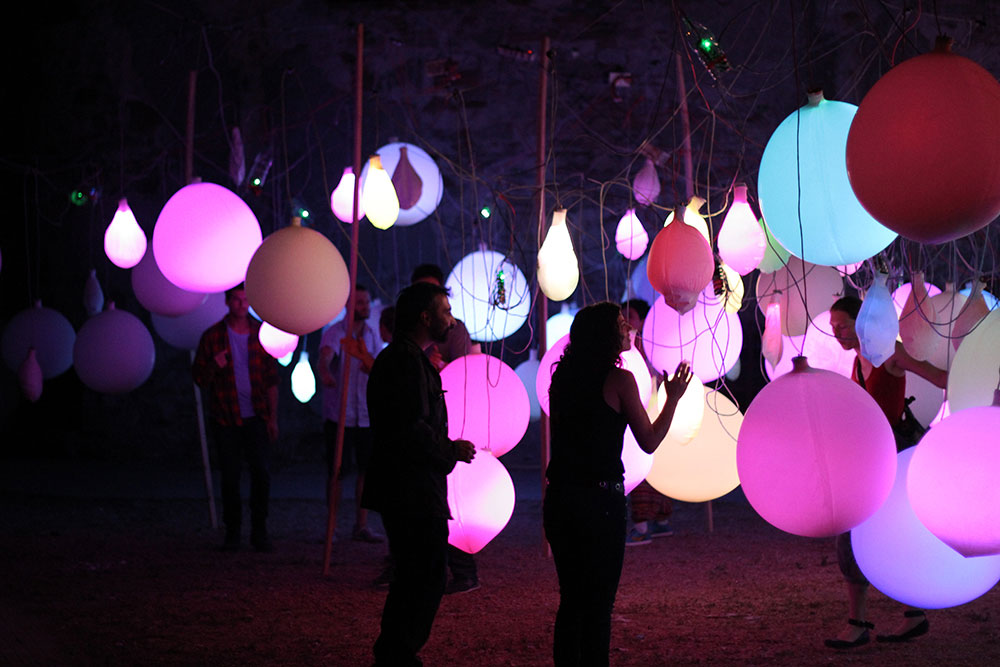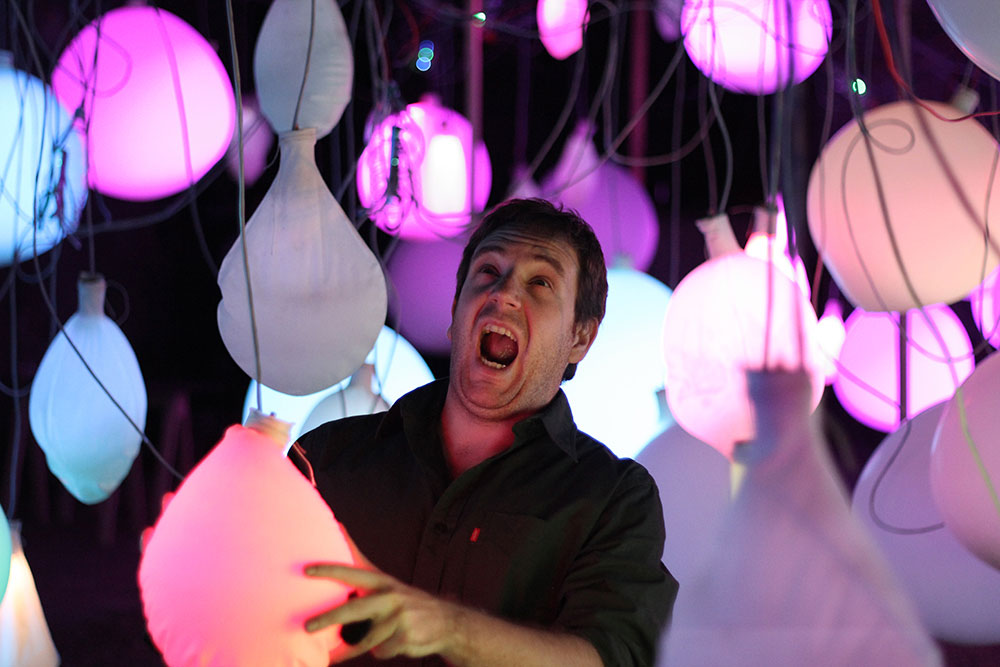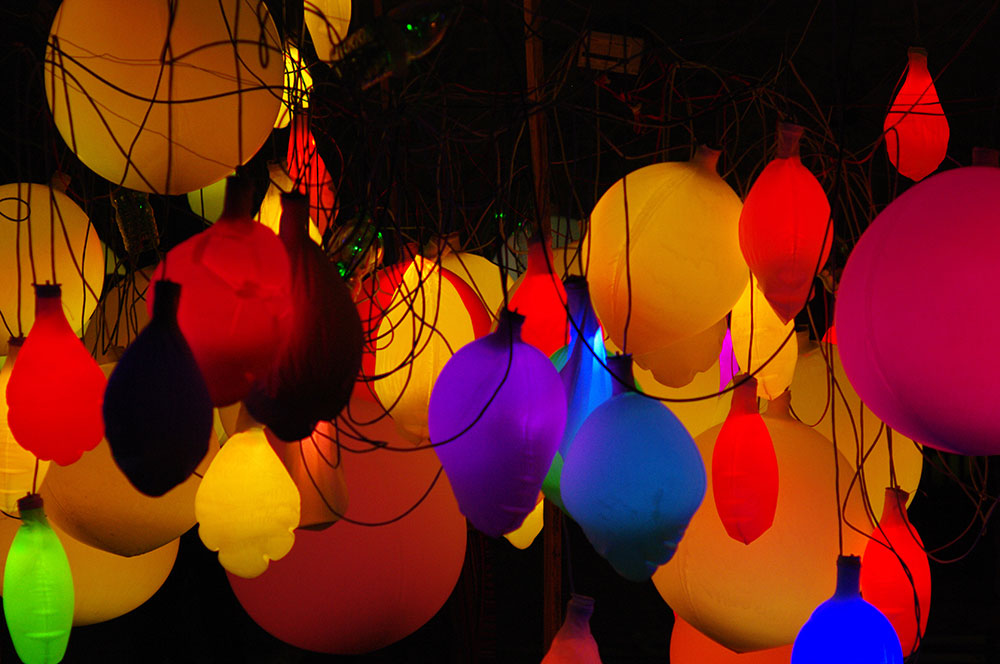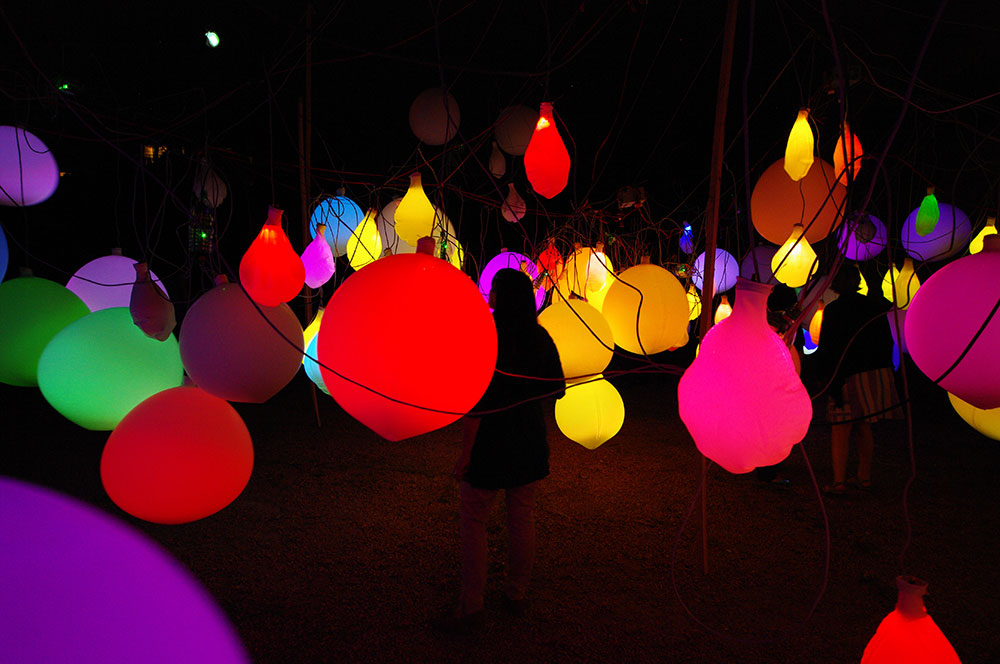Celebra
Celebra is an interactive installation comprising a network of two-hundred, one-square-meter led-lit balloons, funded by Comisión del Bicentenario, UdelaR, and Bondi. The installation interacts both with the local audience sensing their movements and sounds and with remote public, through a web site that not only streams a video with sound of the installation in real-time, but also allows the site's users to set balloons' colors or to modify some parameters of Celebra. Finally, Celebra also can play music (usually our music, specifically composed for it), and visually reacts to it.
As participants approach the piece, the balloons react to the music it plays, to the movements of the participants, and to the sound they produce. The color of each balloon can be controlled individually, so the whole network of balloons may act as a deconstructed screen, or a balloon or group of balloons can react to some specific participants.
The baloons are lit using RGB LEDs, and the network is wired. We develoepd a client-server architecture where one master server controls the balloons and blends the stimuli of a host of clients (both remote and local) that send commands to the installation.
It was programmed using openframeworks and processing, custom electronics, and octobars.
Our work is framed within three main axes: first, media appropriation: the utilization of technology as a raw medium of artistic production, where artists must (and can, by the modularity of new media) dip arbitrarily down into the technological components, adapting, and creating new ones, producing new new media artworks.
Second, the explicitness of interaction. Although all art is interactive (in Duchamp's words: "The creative act is not performed by the artist alone; the spectator brings the work in contact with the external world by deciphering and interpreting its inner qualifications and thus adds his contribution to the creative act.") by making the interaction explicit we can work on interaction aesthetics (quoting Myron Krueger "I have been trying to raise interactivity to the level of an art form as opposed to making art work that happened to be interactive"), or we can attempt to create an artistic interaction language.
Third, the context. In Eladio Diesteís words, "Each problem [...] should be faced with a sort of ingenuity, [...] with an attitude humble and vigilant. It should be thought again, with the basic body of knowledge that is now the heritage of all men", but assuming it implies a radical change of attitude.
For this, it is imperative to acknowledge the asymmetries of first and third world, together with the differences between the solutions that can be applied to our context and the ones created under other parameters. Even more when ìas a consequence of the equivocated attitude of imaging a science and technology already done, that only wait for us to discover them, blindness is created among usî.
Celebra reflects these three axes, and conveys a sense of awe among its audience. This awe comes not only from the physical appearance of the installation, but also from the explicit interaction.

Celebra is an interactive installation comprising a network of two-hundred, one-square-meter led-lit balloons, funded by Comisión del Bicentenario, UdelaR, and Bondi. The installation interacts both with the local audience sensing their movements and sounds and with remote public, through a web site that not only streams a video with sound of the installation in real-time, but also allows the site's users to set balloons' colors or to modify some parameters of Celebra. Finally, Celebra also can play music (usually our music, specifically composed for it), and visually reacts to it.
As participants approach the piece, the balloons react to the music it plays, to the movements of the participants, and to the sound they produce. The color of each balloon can be controlled individually, so the whole network of balloons may act as a deconstructed screen, or a balloon or group of balloons can react to some specific participants.
The baloons are lit using RGB LEDs, and the network is wired. We develoepd a client-server architecture where one master server controls the balloons and blends the stimuli of a host of clients (both remote and local) that send commands to the installation.
It was programmed using openframeworks and processing, custom electronics, and octobars.
Our work is framed within three main axes: first, media appropriation: the utilization of technology as a raw medium of artistic production, where artists must (and can, by the modularity of new media) dip arbitrarily down into the technological components, adapting, and creating new ones, producing new new media artworks.
Second, the explicitness of interaction. Although all art is interactive (in Duchamp's words: "The creative act is not performed by the artist alone; the spectator brings the work in contact with the external world by deciphering and interpreting its inner qualifications and thus adds his contribution to the creative act.") by making the interaction explicit we can work on interaction aesthetics (quoting Myron Krueger "I have been trying to raise interactivity to the level of an art form as opposed to making art work that happened to be interactive"), or we can attempt to create an artistic interaction language.
Third, the context. In Eladio Diesteís words, "Each problem [...] should be faced with a sort of ingenuity, [...] with an attitude humble and vigilant. It should be thought again, with the basic body of knowledge that is now the heritage of all men", but assuming it implies a radical change of attitude.
For this, it is imperative to acknowledge the asymmetries of first and third world, together with the differences between the solutions that can be applied to our context and the ones created under other parameters. Even more when ìas a consequence of the equivocated attitude of imaging a science and technology already done, that only wait for us to discover them, blindness is created among usî.
Celebra reflects these three axes, and conveys a sense of awe among its audience. This awe comes not only from the physical appearance of the installation, but also from the explicit interaction.
|
Credits: Tomás Laurenzo (idea + art direction + coding) Christian Clark (production + direction + coding) Pablo Gindel (electronics guru + overall inspiration) Fabrizio Devoto (architect + chef) Footage: Jimena Schroeder Editing: Laura Castillo Photos: Guillermo Berta and Lucas Mateo |

